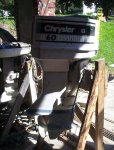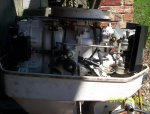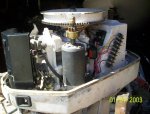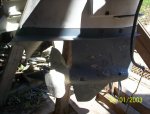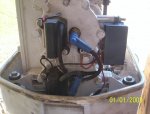Re: 60 hp chrysler specs
While externally it looks like a loop charged engine, it is in reality a crossflow design, although it is taken to the pinnacle of that design. Pistons are very similar to current Force pistons except that they have two large ports in the bypass side of the skirt.
The engine itself is 3.375 bore by 2.80 stroke just like later Force 2 cylinder engines. The crankshaft is about twice as massive as the earlier design 35, 45,55 engines as you can see in the comparison photo. The engine has long rods which are even more massive and slightly longer than later model Force long rods and will not fit any other crankshaft. Crankpins are a larger diameter.
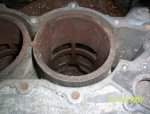
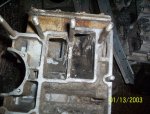
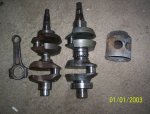
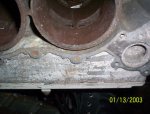
The wrist pin, which is a larger diameter than standard Chrysler is moved up about 1/4 inch in the piston. The block is "packed" with a "bubble" cast in the side acting as a bypass channel. Four large rectangular ports on the bypass side connect the ports in the piston to the bypass ports and charge the cylinder. Two large rectangular exhaust ports in each cylinder feed two separate and equal length runners in the exhaust chest. These lead to a tuned megaphone in the midleg.
As far as modification, I suppose that some improvement could be found, but the Chrysler engineers have already done most of the work.
Photos to follow.
For you older model airplane buffs: This engine reminds me of a very early model engine called the Dooling. It was extremely advanced for its time and featured die cast cylinder blocks, slip in cylinder liners, rear disc valve intake, and porting very similar to the Chrysler.


























